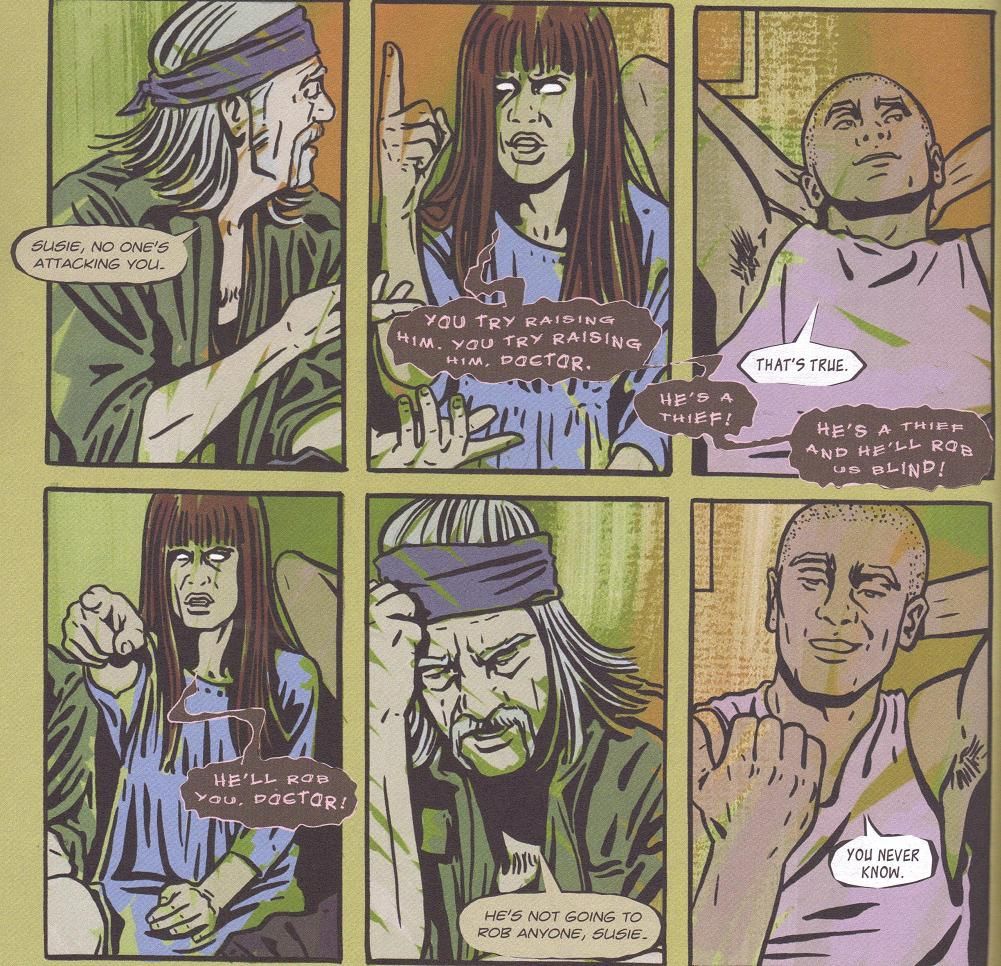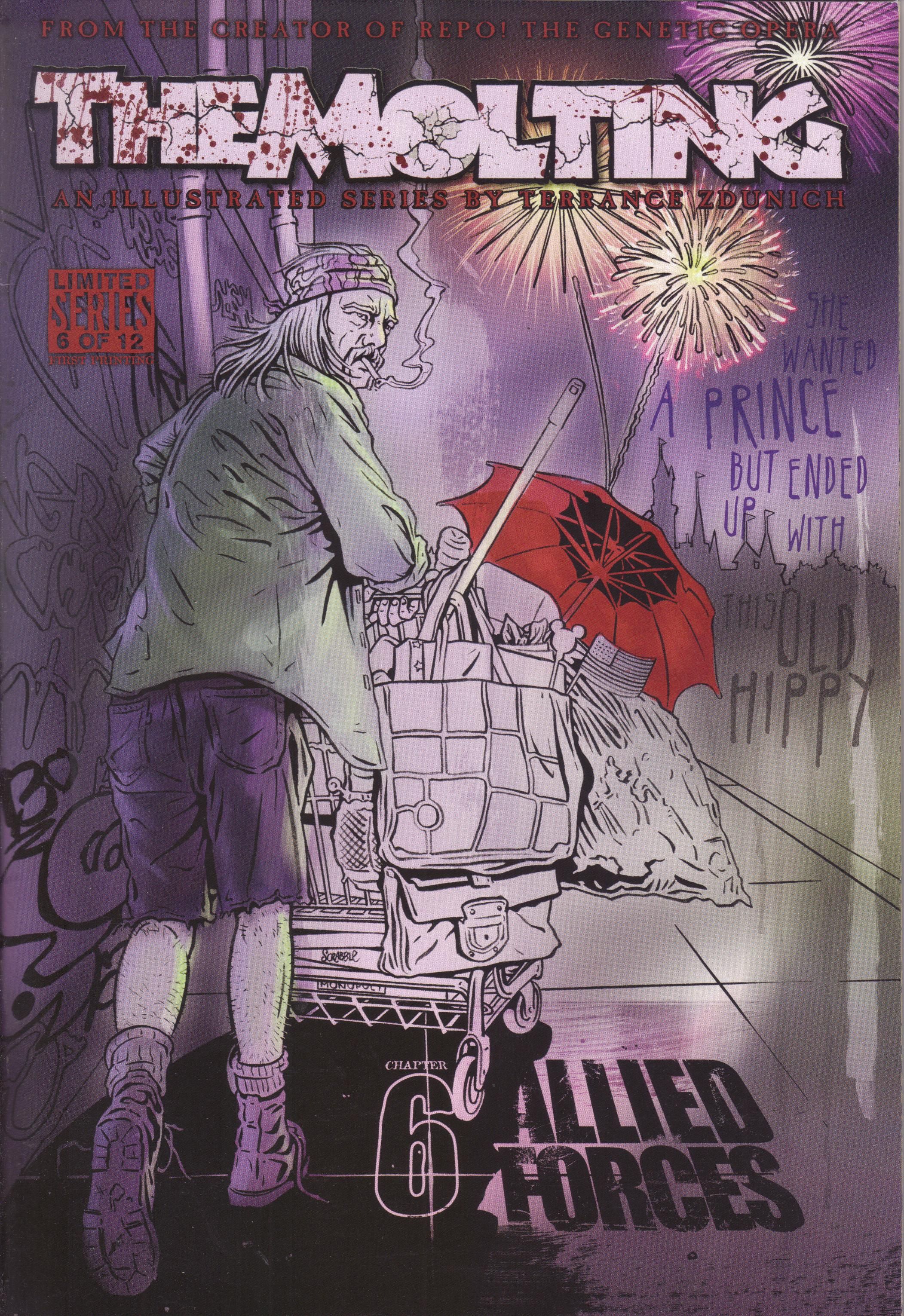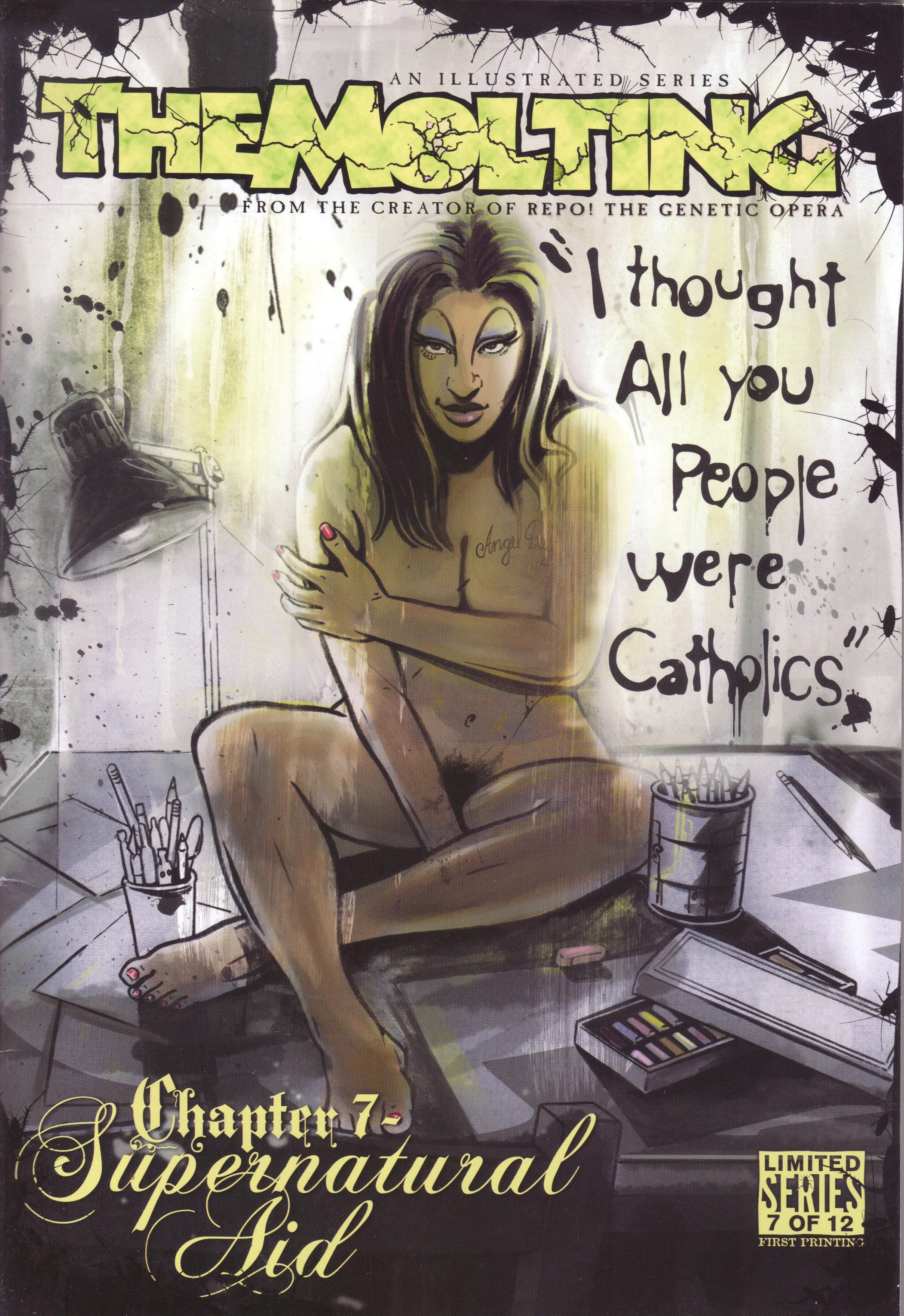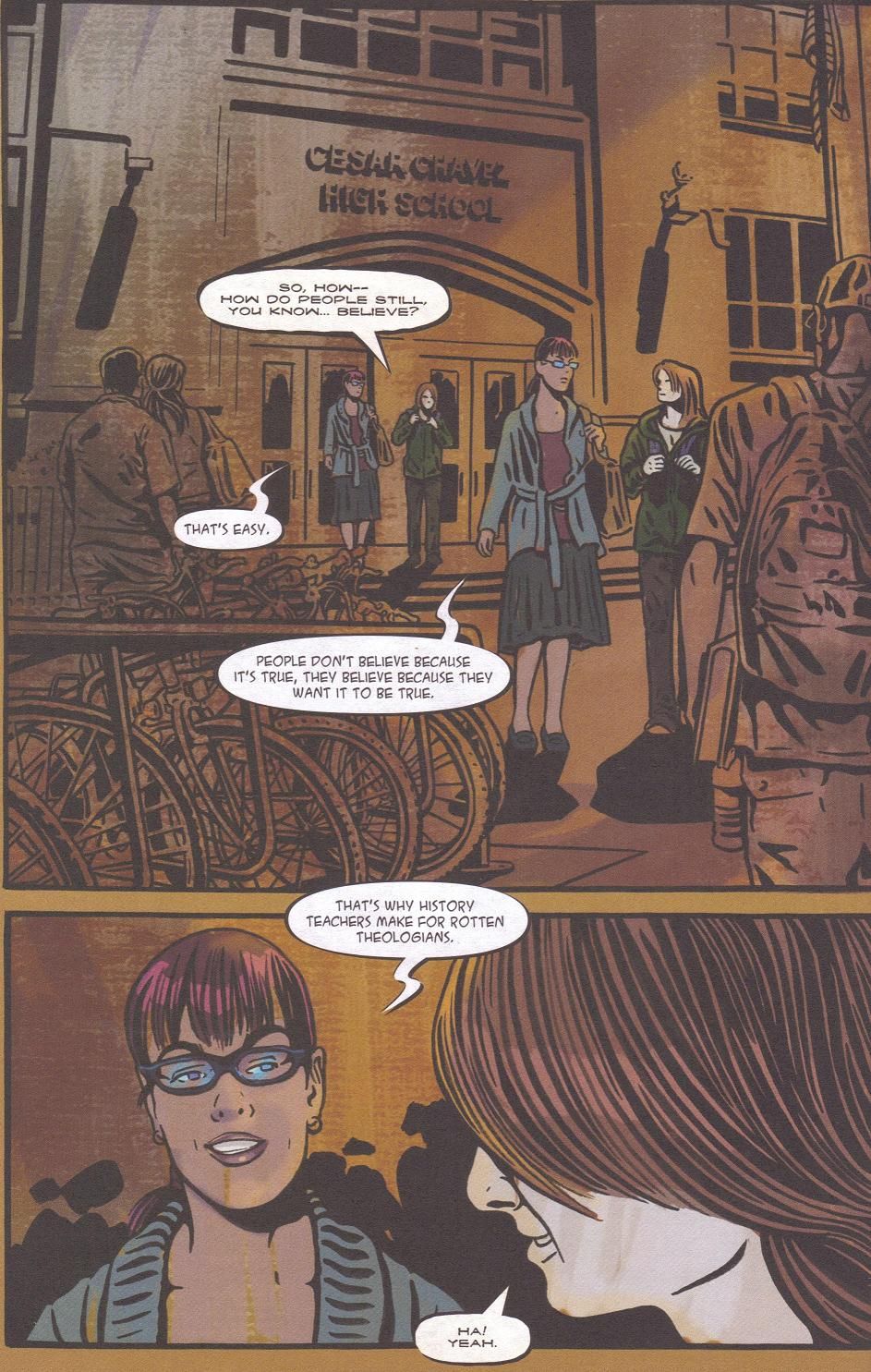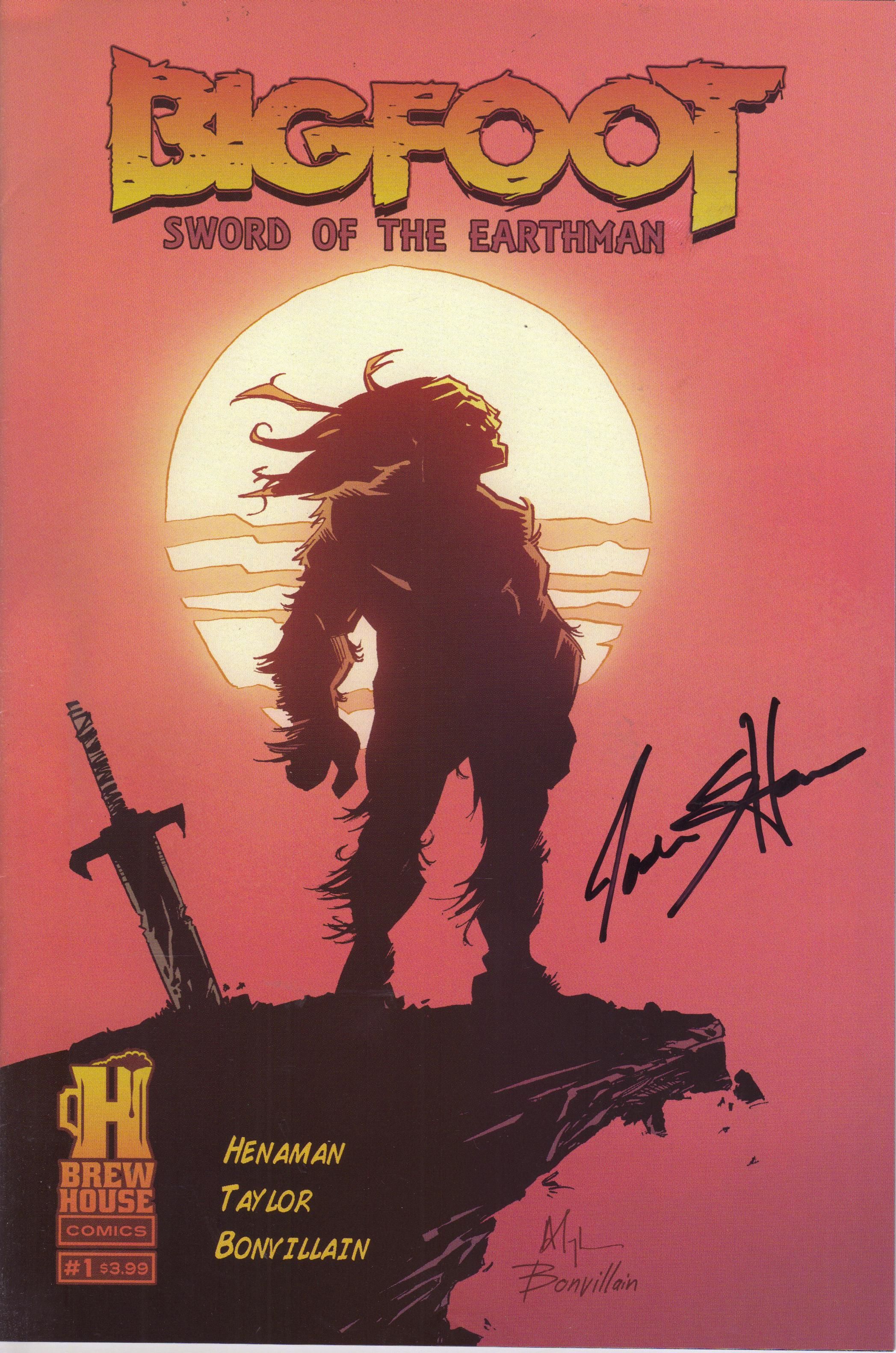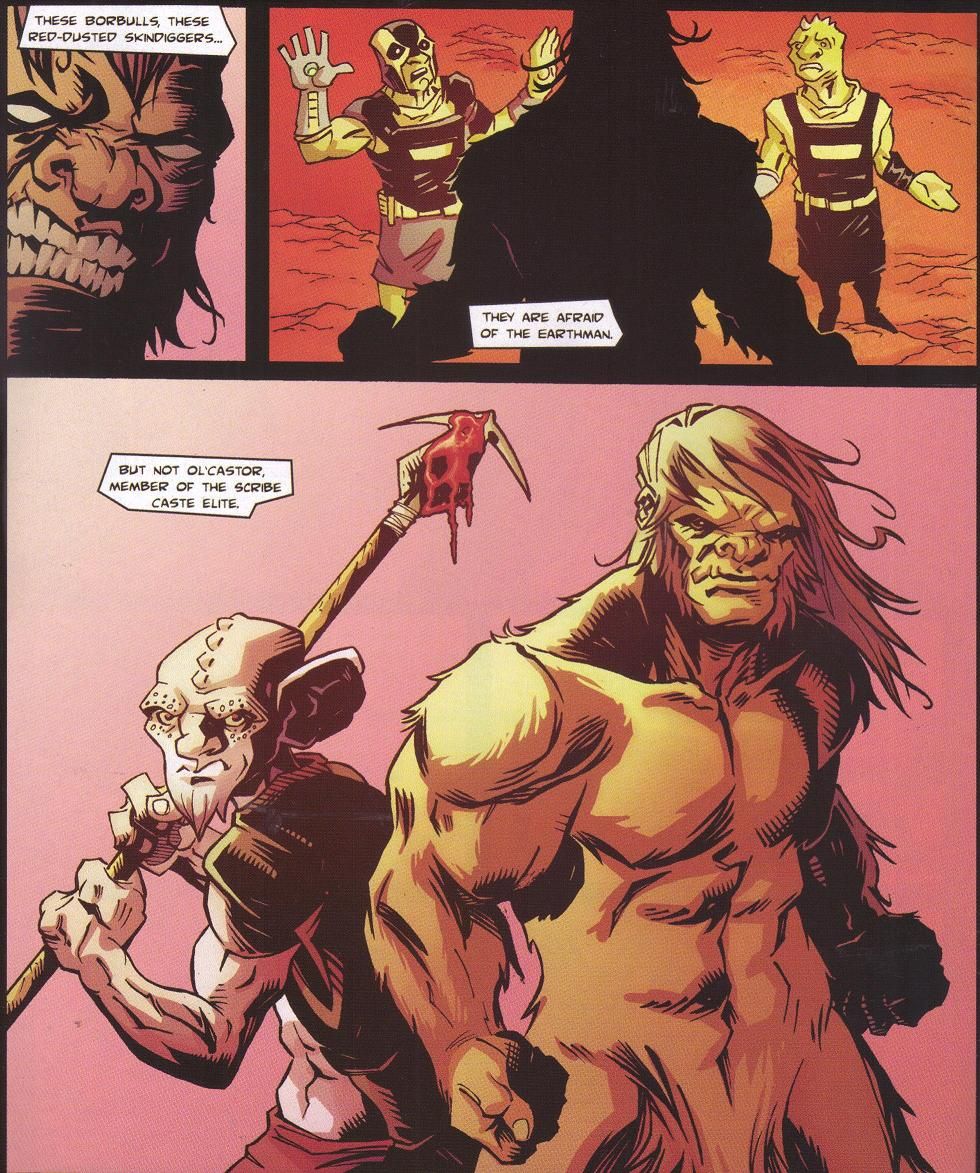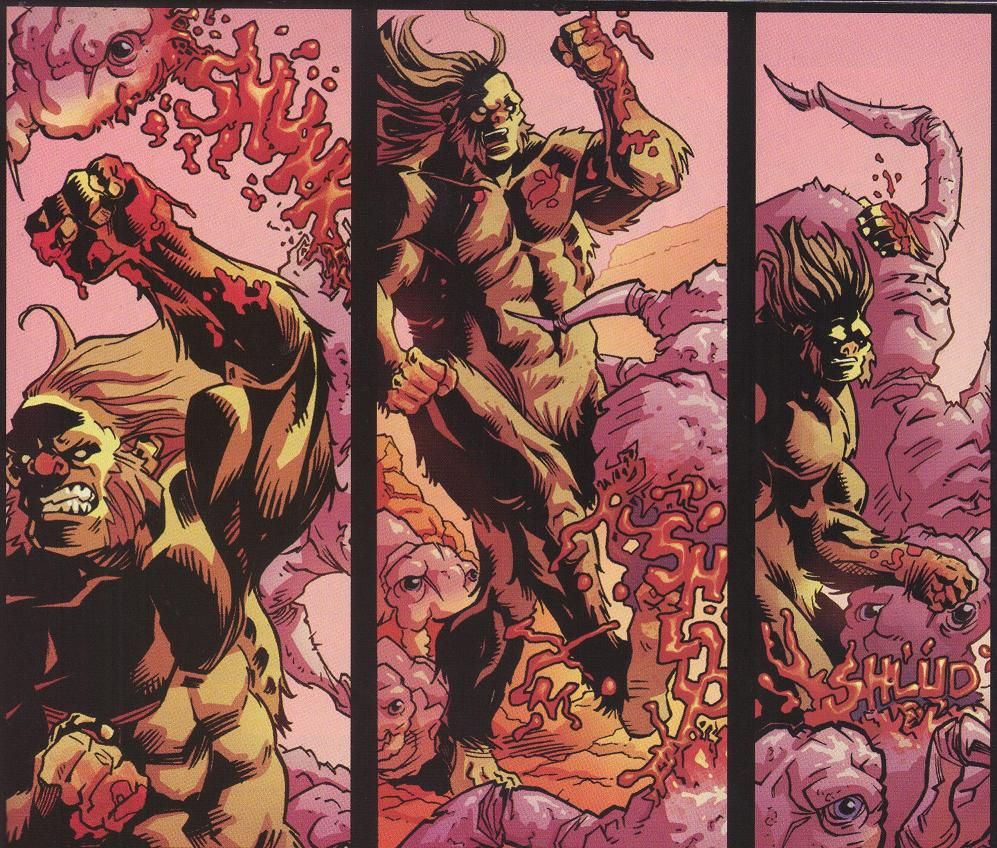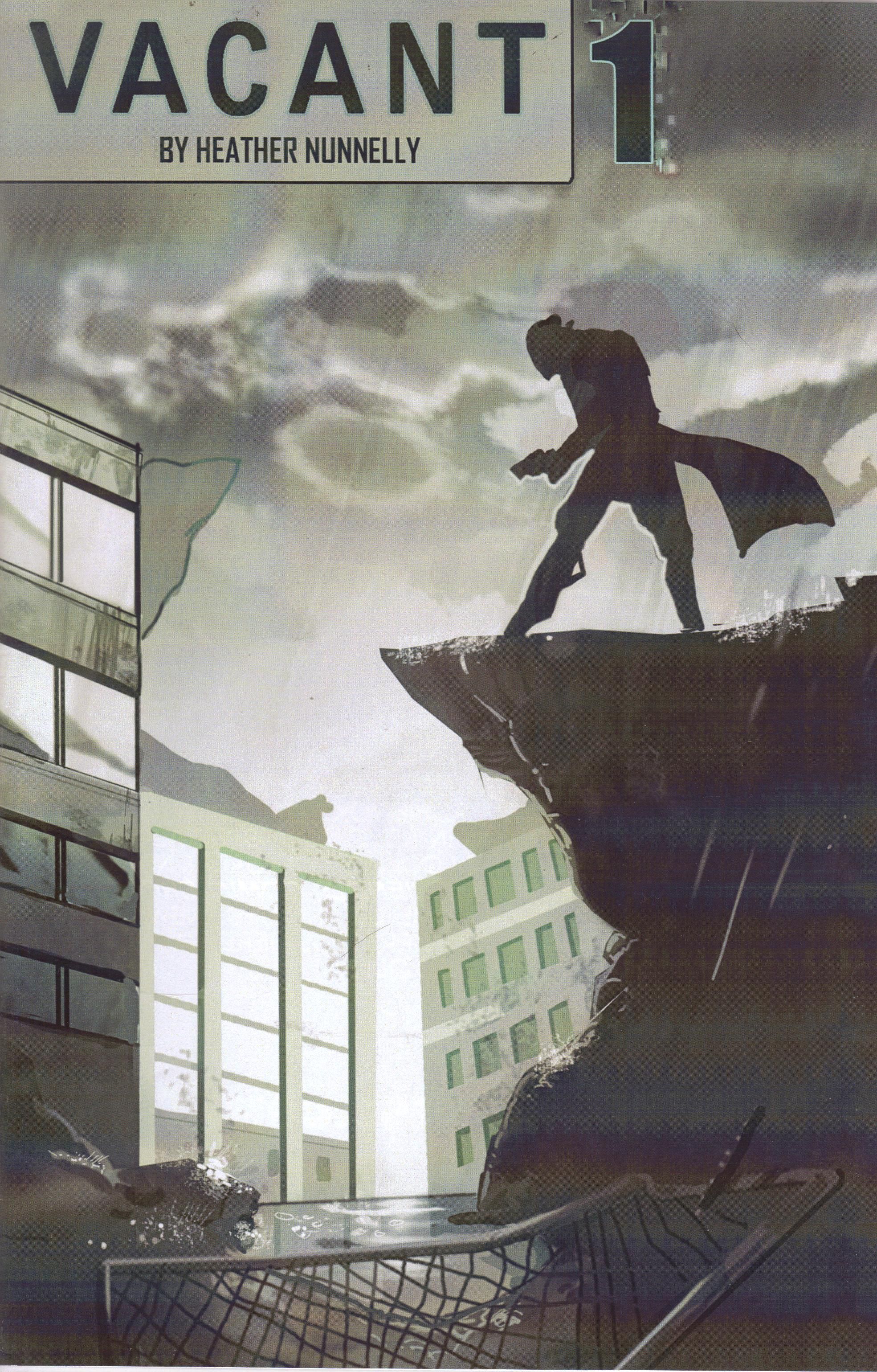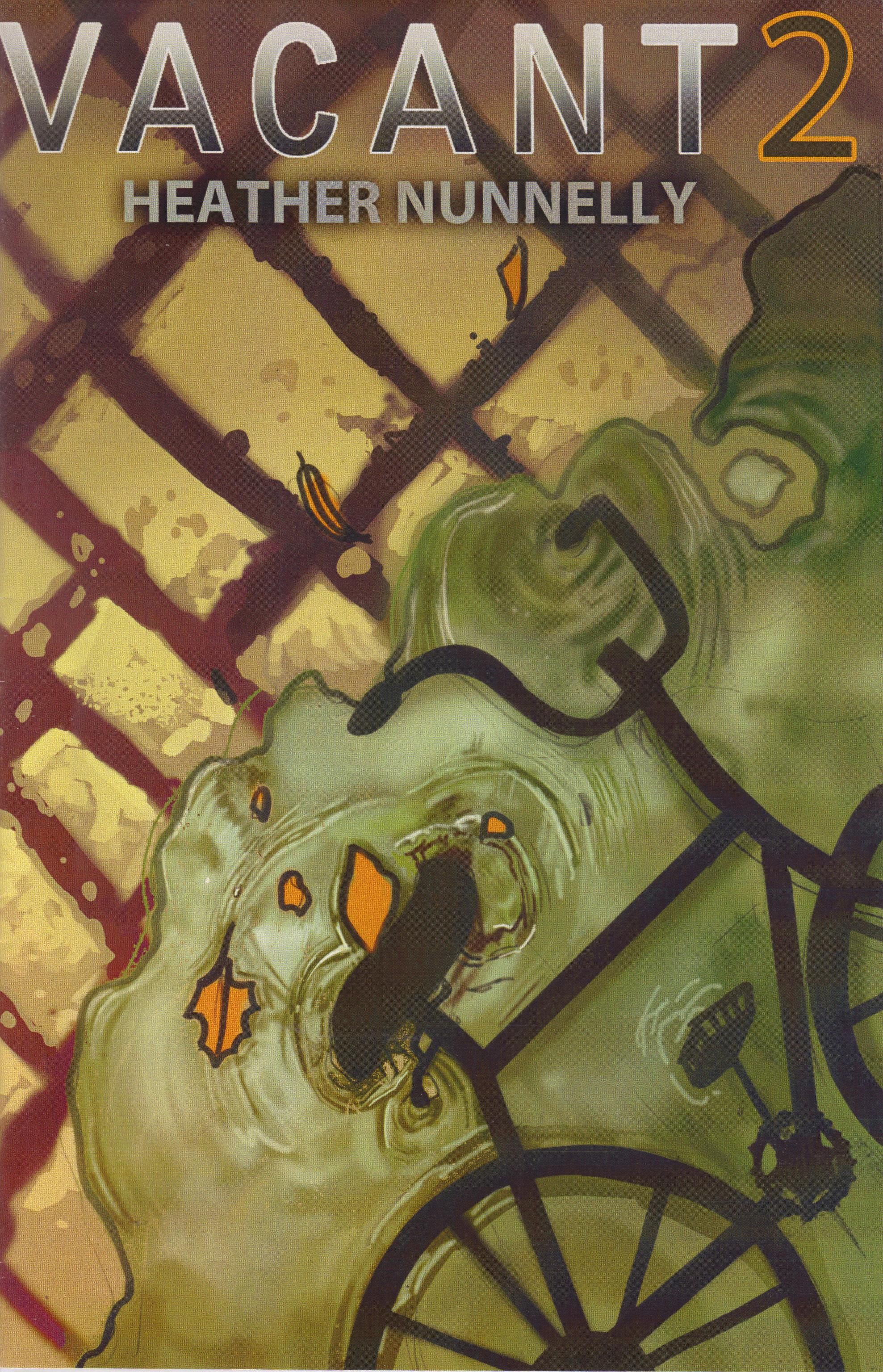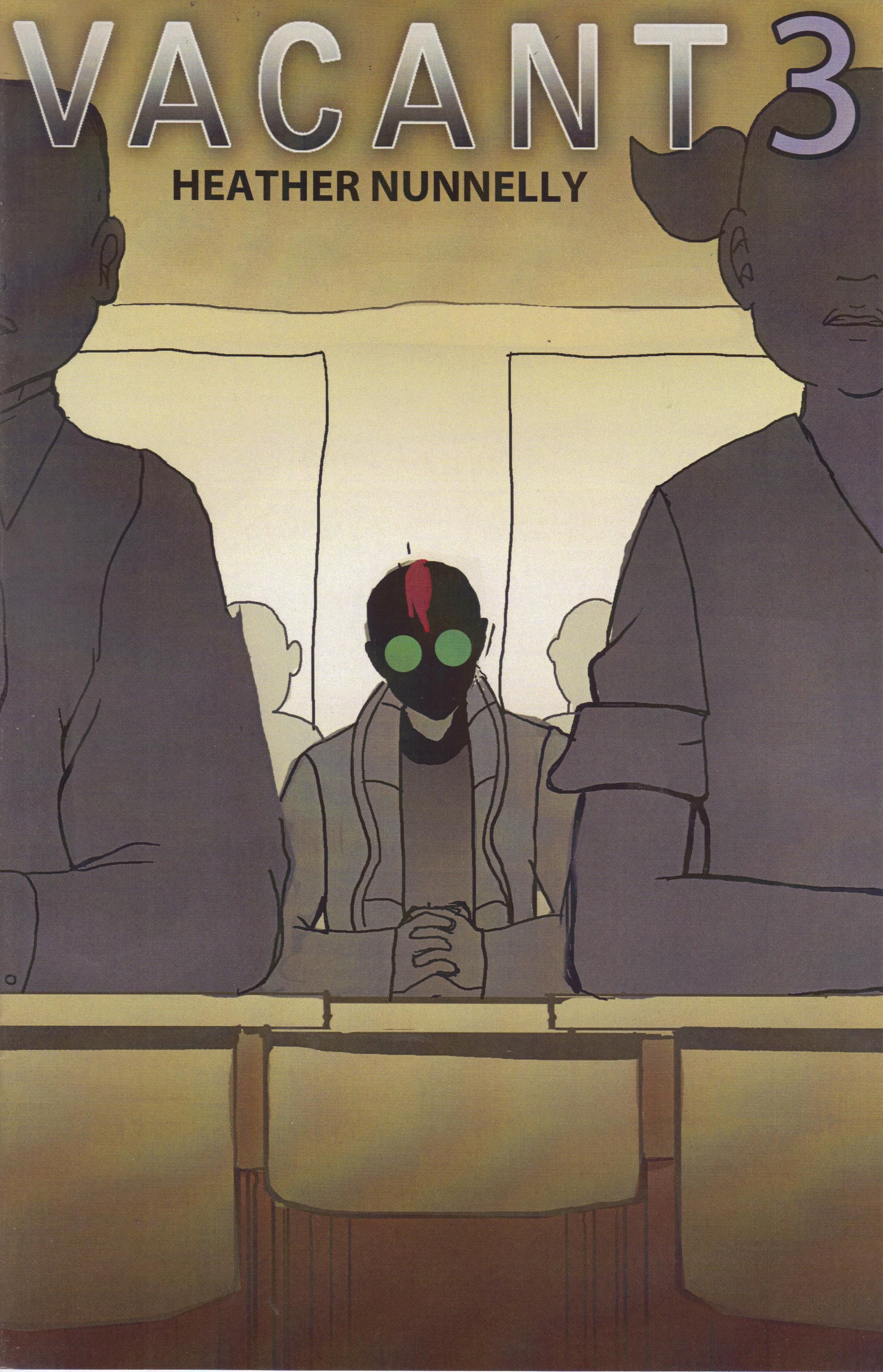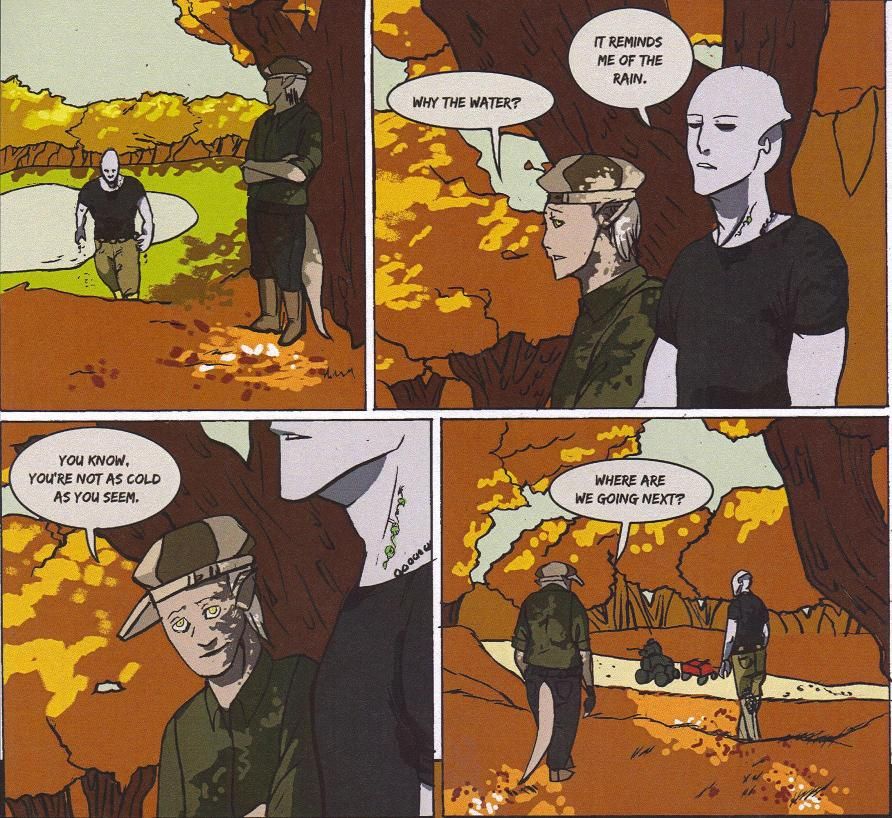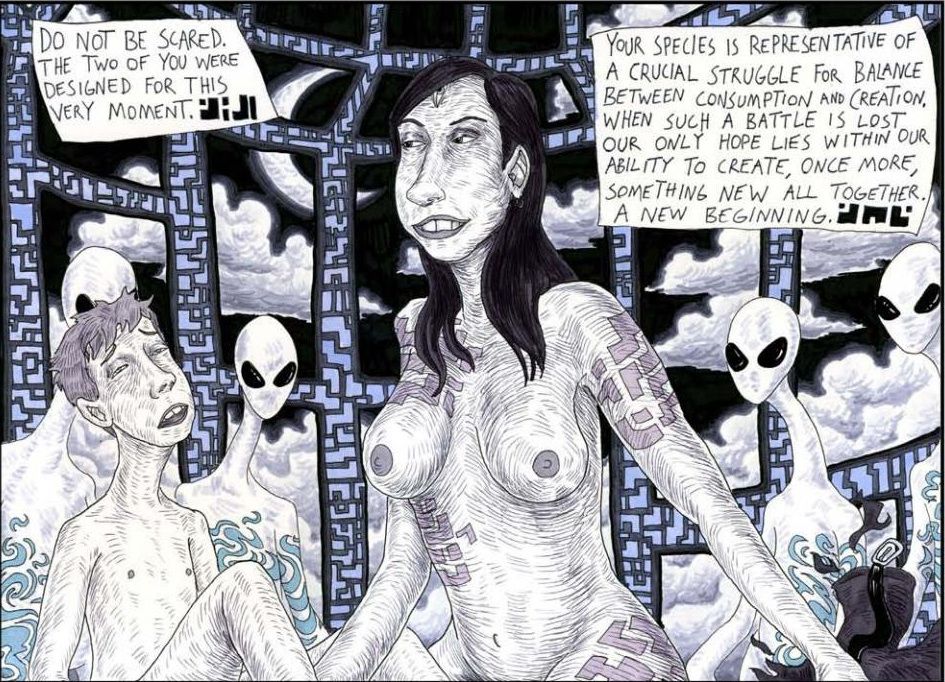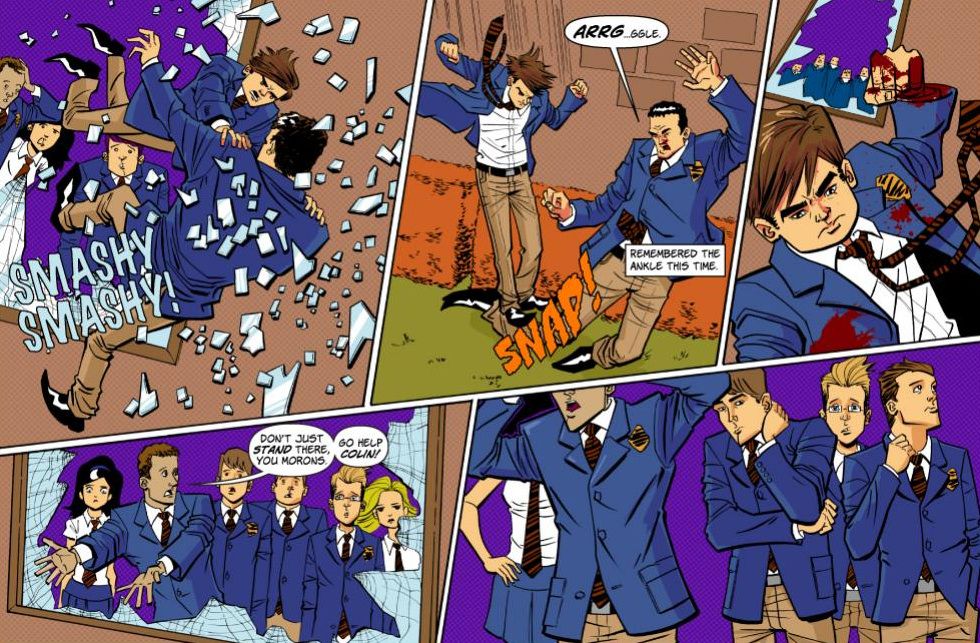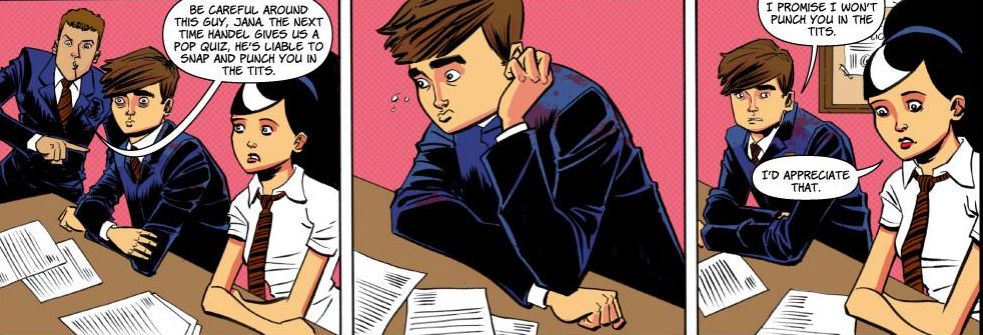I've been receiving a few comics in the mail recently, so I thought I'd review them all at once. So under the cut you'll find The Molting #6-7, Bigfoot: Sword of the Earthman #1, Vacant #1-3, Extravangant Traveler #1, and Model Student #1. Self-published comics are F-U-N!!!! (Plus, there's a little bit of NSFW stuff below. Not too much, but I'm just warning you!)
As always, you can click on the images twice (what's up with that?) to enlarge them. In case you want to!
First up, it's The Molting #6-7 by Terrance Zdunich (writer/artist), Molly Rodman (colorist), and Oceano Ransford (letterer/designer). I've written about The Molting before, as Zdunich sent me the first five issues a while back, and I'm glad he sent me the next two.
To catch you up: The Molting is a story about a dysfunctional family in Anaheim in the early 1990s. The mother, Susie, is traumatized by her early childhood experiences, which begins the story in issue #1, while her marriage to Abe is ... well, not great. Neither of them are bad people - in issue #7, we get to know Abe a bit more - but they just don't know how to communicate with each other, and Susie has never recovered from her problems in her past.
They have two children, Trevor and Joseph, who are somewhat typical disillusioned teenagers. Neither are bad kids, but they don't see much hope in their lives. Trevor steals things and smokes too much marijuana, while Joseph finds solace in drawing. One of his teachers, Ms. Nuñez, tells him to enter a drawing contest, but his work isn't chosen. That happens in issue #6, so we don't know yet how that will affect his desire to draw. Meanwhile, the family's house is infested with cockroaches. It ain't pleasant!
So that's the set-up. Issues #6 and 7 continue the story of the Pryzkind family, as Trevor gets caught burgling a movie theater and then freaks out at his friends, driving away his girlfriend in the process. Meanwhile, Joseph gets his rejection letter, manages to not get caught when Trevor does (he was going to get the car when the cops busted Trevor), gets closer to his teacher (not in that way, you perverts!), finds out a little bit about his mother, and has a nice conversation with his dad. Zdunich keeps hinting that there's something seriously wrong with Susie - well, more than we already know is wrong with her, which is quite a lot - and he's smart about hinting at it without being too blunt about it. Throughout this series, Zdunich has done a very good job of keeping things moving but not pushing it too fast - he builds the characters slowly, allowing them to become real and do their own things, so that when strange things happen, it's not too bizarre that they would act that way. Trevor, we know, has a lot of anger in him, so when he freaks out for seemingly no reason in both issues #6 and 7, it might seem odd, but it makes sense from what we know about Trevor. Joseph is kinder than Trevor (although Trevor is not evil at all), so he's more willing to cut his father some slack when it comes to their broken family. There are a couple of silly scenes - the principal calls Mrs. Nuñez into his office and asks her to get information out of Joseph about Trevor, all while he and a policeman leer at her - but they don't interfere with the very good character work.
Zdunich is quite good at building this sense of despair and tension in the family, so while we expect things to go sideways at some point, we're so invested in the people that it when it does, it will hit harder.
The artwork is still quite good, as it has been throughout. Zdunich is using photo referencing and models, but his style helps make them look more organic than a lot of other artists who do that, and his thick inks and lack of holding lines for a lot of the artwork help create a sooty, dirty, hardscrabble place where these beaten-up people live, far from the ideal of Anaheim that we might have in our heads. Rodman's wonderful coloring helps, too - she uses a lot of browns and reds during the day, turning the town into some kind of industrial nightmare, and she uses greens to good effect at the school and in the psychologist's office (the Pryzkinds are sentenced to therapy to keep Trevor out of jail), adding to the sickly nature of the society in general. The biggest problem with the art is what always happens when artists use models - the movement isn't too fluid. Zdunich doesn't have to worry about that too much, though, because there's not a lot of action in this book. Other than that, The Molting continues to be a nice, creepy, sad story about a family that shouldn't be keeping so many secrets, but is. That never ends well!
You can buy copies of the comic here. As I noted last time, the only problem is that they're 8 bucks each. However, they're long issues - earlier issues were around 30 pages long, but issue #6 is 60 big pages, and issue #7 is 56 pages long, so it's a pretty good value. Plus, they're very professionally put together - the paper stock is superb, and the books just look good. Just like last time, I don't know how long it will take Zdunich to finish this project, but I hope he does, because it's a pretty keen comic.
***
Up next is Bigfoot: Sword of the Earthman, which is written by Josh S. Henaman, drawn by Andy Taylor, and colored by Thomas Bonvillain. You can find the book on Facebook, as well. Issue #1 costs a mere $3.99, which won't break your bank, will it?
Bigfoot is one of those comics where it sounds like the creators were sitting around drinking and thinking of goofy ideas, and decided to run with one: What if Bigfoot was real, and the inhabitants of Mars decided to take him from Earth to Mars, where he becomes, basically, John Carter?
Now, those kinds of ideas can often backfire, but of course, it's all in the execution, and Henaman, Taylor, and Bonvillain have made a pretty good beginning. They made a couple of good choices - Bigfoot doesn't say a word throughout the entire comic, and the narrator is Castor Bagworm, a Martian scribe, who decides to use Bigfoot to escape his servitude to Lord Jeoffa, a despot who's fighting a war and building monuments to himself. Henaman gets a lot into this issue - we get the two main sides of this war, we get some of the background, and we get a good handle on the personality of Castor, who's a wheedling coward who would sell his own mother into slavery for a few bucks. At least, that's how it seems. By the end of the issue, Bigfoot and Castor seem to have formed a bit of a bond (forged by trauma, it's true, but still) and they've escaped one frying pan and ended up in a fire.
Henaman begins the book with Bigfoot sitting on a rock, remembering the past, which isn't a bad way to start the book - the framing device has a long tradition in fiction - but I think the book is a bit weak in that Henaman writes on the inside front cover how and why Bigfoot is on Mars. Henaman obviously wants to jump right into the action, and that's fine, but it's still odd, because it seems like the Martians had a good reason to snatch Bigfoot from Earth, but all we get is a dry recitation of the fact that they did it. I'm not sure how Henaman could have changed this without completely re-writing the first issue, and I don't think that would be a good idea, but it's still strange. The Martians keep talking about "the Earthman" as if he's been there a long time, but that's strange. Lord Jeoffa speaks as if he's been a factor in Martian politics for some time, and if that's true, why couldn't we see that adventure? It would be just as adventurous as what we have here, wouldn't it? I don't really have a problem with the way Henaman writes this issue, you understand - the story is exciting, Castor is a fun character, and we move through the plot fairly well - but it feels like this is issue #15 or so, and we've just dropped into the series. It's a bit disorienting. Maybe that's just my problem, though.
I'm trying to figure out a good analog for Taylor's artwork, but I can't.
There's a name on the tip of my tongue, but I can't retrieve it. I guess it doesn't matter, but that bugs me. Anyway, the artwork is quite nice - Taylor has a good sense of laying out the page, and the designs of the characters are nice. It's a bit rough, but that's fine, because it's energetic and exciting. When Bigfoot cuts loose against some weird desert monsters, Taylor does a very good job with the fight, and he's pretty good with faces, too, which is always a plus. Bonvillain does a nice job with the coloring - sure, everything is orange, but he gives Mars a vibrant look, befitting the adventurous tone of the book. Bigfoot is another comic that looks very professional, which is always nice to see.
You can buy the comic on the web site (which I linked to above). There's still a bit of the "Isn't this kewl?" feeling about the book, but when the creators are committed to a concept instead of just the vague idea of a concept, it helps a lot, and it seems like these guys are trying to make this a more interesting adventure than just throwing Bigfoot into a strange place and basking in the awesomeness of it. I appreciate that, and I hope they can keep it up!
***
Moving on, we come to Vacant #1-3 by Heather Nunnelly, which you can read for no money whatsoever right here. You could buy the issues, too, you know, and they're only $2.50 each. Something to think about!
Vacant is a nifty science fiction story in which humanity has been rescued from a destroyed Earth and spread throughout the galaxy, mixing with a bunch of other kinds of creatures.
We get into the story when a police man named Hayze investigates a planet named Pearl which appears to be abandoned. Hayze finds one person on the planet, but he dies before Hayze can get any information out of him. His boss tells him that the dude they found died of a virus, which also killed the humans on Earth and the two planets on which they were relocated, including Pearl. So Hayze is tasked with finding a cure. He tracks down one person who might have a cure, but that's a dead end. Then, in issue #3, we're introduced to a punk kid named Aex, who is apparently far older than the other people in his high school (he gets mentioned at the end of issue #2, but Nunnelly screwed up and called him by a different name, so it's a bit strange until you get to the end of issue #3). Aex has a lot of secrets, and it appears that at the end of the issue, Hayze tracks him down, but the issue ends on a bit of a cliffhanger. If only I could read this on-line to find out what happens!
Nunnelly crafts an intriguing story, one that obviously has a vast scope given that in issue #3, she suddenly shifts focus from Hayze to what looks like a regular high school on Earth except for a few minor odd changes. The mystery is certainly interesting - are humans causing this virus, or are they just affected more, and other races aren't? What does Krel, the man Hayze finds on Pearl, have to do with it? What was up with the weird doctor who might have had the cure but had a much larger and more disturbing issue? What's Aex's deal? Nunnelly does a good job doling out information - she takes her time with the story, so that we get quite a bit of information about the personalities of each character in the comic even though it's never boring. She has a good sense of pacing and when to reveal things and when to withhold them. We don't know a lot yet, but we do know enough, and it's pretty interesting.
The artwork isn't quite up to speed, however.
Nunnelly's storytelling skills are pretty good - she lays out a page pretty well, and the characters are designed well enough so we can tell them apart - but her actual line work is rather rough. She actually does a decent job with facial expressions, and we can read the characters well through their body language. In some places, the art is hauntingly beautiful - when Hayze discovers the doctor's secret, for instance, it's a beautiful if tragic scene. But overall, the art is not terribly detailed, and the figures are often quite stiff. It's frustrating because there is a fair amount of "movement" in the comic, and it doesn't work as well as some of the more static images. The good thing is that it's definitely something that will get better - again, Nunnelly doesn't seem to have a problem with structuring a page, so her actual drawing skills can only get better, making the entire thing better. She does, I will say, color the book rather nicely, creating good moods for different scenes, which is never easy.
Vacant is a comic with a lot of potential, and Nunnelly is (so far) doing a fine job creating this universe and giving us a mystery. The art will only improve, and I'm curious about what's going on. I hate reading comics on-line, though! Confound it! I may have to dip into it, though. It's pretty neat.
***
I also got .pdfs of two comics, the first of which is Extravagant Traveler by Jeremy Baum. This is a strange story about aliens and people who have been abducted by aliens. Baum does tell a story, but this is much more a meditative narrative about the nature of reality and what might be behind what we perceive. A man wakes up and remembers a time when he was a teenager and was abducted by aliens. Interspersed with this is an interview of a professor who questions our reality and whether or not there's something else out there. The boy - Hans - is taken on board the spaceship, and the comic becomes a metaphor for sexual awakening, as the aliens present him with a woman, with whom he has quite a lot of sex. The aliens are trying to breed Hans' "kind" with theirs, as the woman isn't quite human, but it's clear that Baum is using the aliens at least a little bit metaphorically, as Hans discovers a "new world" of sex when he gets together with the woman.
Baum links Hans' alienation from his own life - he's a loner without a very good family life - with a literal "alienation" from the entire planet, and the issue ends rather plaintively, as Hans has never been able to rejoin "human" society after his experience. It's a weird little story, but quite powerful.
Meanwhile, Baum is an accomplished artist whose work is perfect for this kind of story. Its tone is one of alienation, as he draws people who are just slightly "off" - they are perfectly normal people, but Baum's style makes them anatomically "incorrect," adding to the sense of unreality in the comic. The art is somewhat eerie but beautiful, which makes Hans' separation from his world and his immersion in sex a bit more tragic, as we know that he'll never regain what he's lost but will never stop looking for it. Baum creates a surreal world that seems infused with the alien presence, which is again a metaphor, and his transitions between scenes become quick little vignettes about the banality of everyday life, something Hans yearns to escape from. The final few pages of the issue, which are almost completely wordless, show the aliens mixing the DNA of their two races, which becomes something more dazzling as Baum follows this strange creation along its path. It doesn't help the adult Hans, who remains lost and alone.
If you're interested in checking out some of Baum's work, you can buy stuff here. It's very odd work, but very cool as well.
***
The last comic is Model Student, which is written by Jake Bell and drawn by Joe Bowen. I've known Jake for several years, although I don't see him that often, and a few years ago I reviewed his two superhero prose books, which were quite good. Model Student is another web comic, so you can read it for free, but Jake let me know that if you want to download the first "issue," they're stealing the Radiohead model and you can pay whatever you think is fair. So there's that.
I always have to point out that I know Jake personally (if not very well), because I like his work a lot, and I don't know if it's because I know him (I hope not, but I still point it out). He has a wicked sense of humor, and he knows how to come up with good ideas.
Model Student isn't a great example of his sense of humor - it's funny, but not overly so - but it's a pretty good idea: a kid named Kevin Thorne starts a new school, the Vendrell Academy, because he's been expelled from three other schools for fighting and his grandfather managed to get him one last chance at this fancy prep school. Almost immediately, he gets in a fight (with a bully, because even though he's angry, he's still the hero) and almost kills someone, but the headmaster tells him he'll give him one chance ... if Kevin agrees to act as a student enforcer. The headmaster can't really discipline students because their parents are so powerful, so he wants Kevin to snitch on the other students and lay down the law if he has to. Kevin reluctantly says yes, but it's a smart move, because in his next class, he sits next to the girlfriend of one of the popular kids, who flirts with him quite a bit. Good times!
Jake isn't breaking much new ground here - Kevin fights bullies, the bullies are right out of every high school movie of the last 30 years, the only person who wants to be friends with Kevin is the nerd who gets picked on by the bullies, and the girlfriend of the popular dude thinks the new, brooding guy who can beat people up is groovy. But it works, partly because of the twist where Kevin is actually an enforcer for the school, and also because he seems to be much better at fighting than we would expect, so there's some mystery there. Who is Kevin, really? He's not a run-of-the-mill kid, and that adds a nice touch of curiosity to the book. Plus, Jake writes pretty good dialogue, and he establishes the characters quickly and well. Yes, a lot about this is clichéd, but clichés can work, if they're handled well, and so far, this is pretty good.
Bowen is also a factor, as his artwork helps the story immensely. He has a nice, cartoony style that helps keep the story light even as Kevin is pummeling a student, and his details are quite nice.
He uses the whole panel, too, so there's stuff going on in the background that we might miss but creates a scene instead of just figures talking to each other. He's quite good with the limitations of the storytelling format - the comic is designed to be read on a screen a few panels at a time (a new "page" goes up every Tuesday), and as the "pages" are more horizontal than vertical (as they should be, given that it's a web comic), Bowen is a bit limited with what he can do, but he does quite well with it. He also does some nice work with body language and facial expressions, which is always crucial. Despite the somewhat extreme subject matter, the characters in the comic look like they belong in high school, both in the way Bowen draws them and how he shows them reacting to each other. It's well done.
I don't know what the plan is for Model Student - how long it's supposed to run, in other words - but it's a pretty good comic. Would I lie to you? (Jake also wanted me to link to this short story he did a few years ago for a Dark Horse anthology that never got published. The joke is obvious pretty quickly, but it's still not a bad six-page story, because it's perfectly plausible. So there you go!)
So let's wrap this up. In the final analysis, I like all of these comics. I would definitely Recommend you check out The Molting, Extravagant Traveler, and Model Student. I'm not quite as enthusiastic about Bigfoot and Vacant, but they're certainly interesting enough to warrant a look. I love that these are five completely different kinds of comics in five different styles, because I love being reminded how infinitely flexible comics are. I'd like to thank all the creators for sending these to me, because it really is difficult sometimes to find all the cool stuff that's being produced. I hope this post helps everyone find some off-the-beaten-path comics, because we can always use those!

